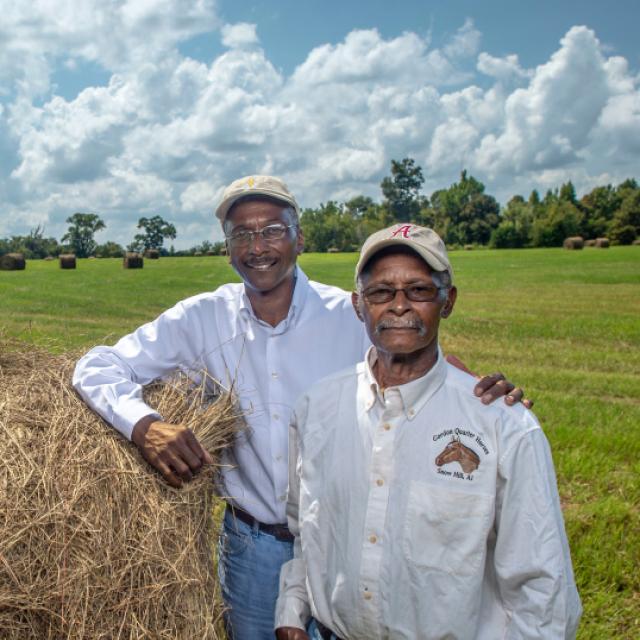Notice


Source water protection includes a wide variety of actions and activities aimed at safeguarding, maintaining or improving sources of drinking water and their contributing areas.
Source water refers to sources of water (such as rivers, streams, lakes, reservoirs, springs and groundwater) that provide water to public drinking water supplies and private wells. Source water protection includes a wide variety of actions and activities aimed at safeguarding, maintaining or improving the quality and/or quantity of sources of drinking water and their contributing areas.
The 2018 Farm Bill added a provision providing for the protection of source water through targeted conservation practices. This provision, 1244(n), instructs USDA to encourage the protection of drinking water sources through the following methods:
- Identifying local priority areas for drinking water protection in each State. This is done in collaboration with State technical committees and community water systems and may address concerns about either the quality or quantity of source water or both.
- Providing increased incentives for practices that relate to water quality and quantity and protect drinking water sources while also benefiting producers.
- Dedicating at least 10 percent of the total funds available for conservation programs (excluding CRP) to be used for source water protection each year, from fiscal year 2019 through 2023.
Fiscal Year 2023 Idaho Priority Areas
ID FY23 Source Water Protection Priority Area Viewer (arcgis.com)
The approved list of conservation practices (20) are eligible in the Source Water Protection High Priority Areas, beginning in FY23 are:
- 309 - Agrichemical Handling Facility
- 313 - Waste Storage Facility
- 328 - Conservation Crop Rotation
- 340 - Cover Crop
- 350 - Sediment Basin
- 351 - Well Decommissioning
- 380 - Windbreak/Shelterbelt Establishment
- 390 - Riparian Herbaceous Cover
- 393 - Filter Strip
- 449 - Irrigation Water Management
- 590 - Nutrient Management
- 595 - Pest Management
- 634 - Waste Transfer
- 635 - Vegetated Treatment Area
- 638 - Water and Sediment Control Basin
- 650 - Windbreak/Shelterbelt Renovation
- 656 - Constructed Wetland
- 657 - Wetland Restoration
- 658 - Wetland Creation
- 659 - Wetland Enhancement
For more information on these Conservation Practices go to: Idaho | Field Office Technical Guide | NRCS - USDA
Source Water Protection (SWP) Contact for Idaho
Maureen Pepper
State Water Quality Specialist
Phone: (208) 378-5723
E-mail: maureen.pepper@usda.gov
Ready to get started?
Contact your local service center to start your application.
How to Get Assistance
Do you farm or ranch and want to make improvements to the land that you own or lease?
Natural Resources Conservation Service offers technical and financial assistance to help farmers, ranchers and forest landowners.

To get started with NRCS, we recommend you stop by your local NRCS field office. We’ll discuss your vision for your land.
NRCS provides landowners with free technical assistance, or advice, for their land. Common technical assistance includes: resource assessment, practice design and resource monitoring. Your conservation planner will help you determine if financial assistance is right for you.
We’ll walk you through the application process. To get started on applying for financial assistance, we’ll work with you:
- To fill out an AD 1026, which ensures a conservation plan is in place before lands with highly erodible soils are farmed. It also ensures that identified wetland areas are protected.
- To meet other eligibility certifications.
Once complete, we’ll work with you on the application, or CPA 1200.
Applications for most programs are accepted on a continuous basis, but they’re considered for funding in different ranking periods. Be sure to ask your local NRCS district conservationist about the deadline for the ranking period to ensure you turn in your application in time.
As part of the application process, we’ll check to see if you are eligible. To do this, you’ll need to bring:
- An official tax ID (Social Security number or an employer ID)
- A property deed or lease agreement to show you have control of the property; and
- A farm number.
If you don’t have a farm number, you can get one from USDA’s Farm Service Agency. Typically, the local FSA office is located in the same building as the local NRCS office. You only need a farm number if you’re interested in financial assistance.
NRCS will take a look at the applications and rank them according to local resource concerns, the amount of conservation benefits the work will provide and the needs of applicants. View Application Ranking Dates by State.
If you’re selected, you can choose whether to sign the contract for the work to be done.
Once you sign the contract, you’ll be provided standards and specifications for completing the practice or practices, and then you will have a specified amount of time to implement. Once the work is implemented and inspected, you’ll be paid the rate of compensation for the work if it meets NRCS standards and specifications.

